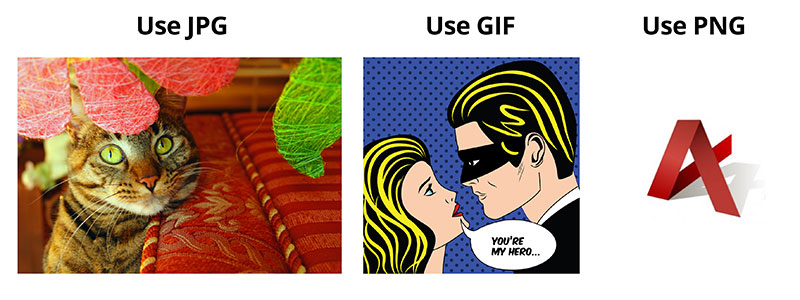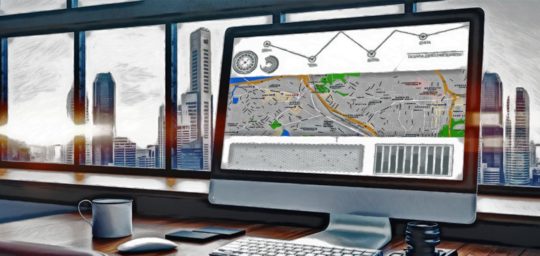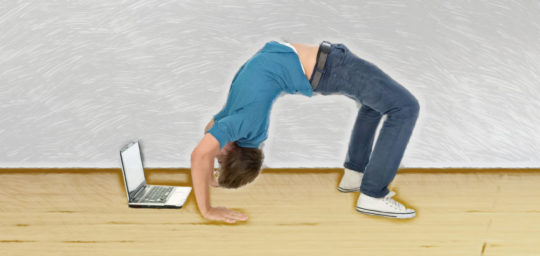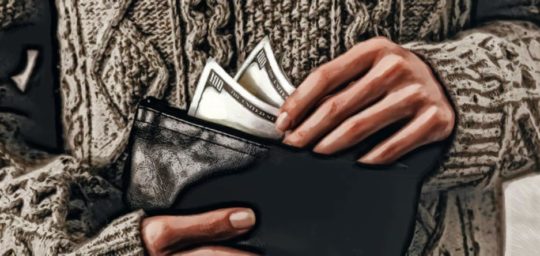How to Use SEO Optimized Images
Importance of Using SEO Images on Your Website
The most important consideration for any web page today is high quality content. High quality content forms the crux upon which all other parts of the website hangs. As much as this remains profitable to websites, another important factor that will determine the successful SEO ranking of any web page is Image Optimization. Images go hand in hand with rich content and the biggest search engines feeds on that because the end users love to use them. Using images to drive traffic to your website is however, not straight cut, as several factors ensures its success.
This article will shed light on some of the ways you can optimize images to boost your site’s rankings and get higher engagement from traffic. The various factors that you need to consider for its success will also be discussed.
Image Optimization is favorable for Small and large campaigns.
The high cost of running SEO campaigns and the amount of competition, discourages small businesses who are looking to grow beyond their current capacity. Optimizing images for SEO offers these small businesses an inexpensive outlet with amazing results.
SEO is a great tool for attaining higher rankings on websites and their pages but the differences between a successful SEO campaign, and a failed one is the amount of drive, organization and resource that is committed to the campaign.
SEO image optimization is one of the most underrated SEO methods that has been utilized effectively by many businesses and will still be used by many who are concerned about the effectiveness of their SEO, above jumping on the popular bandwagon. SEO is not meant to be run using a one size fits all approach, so businesses needs to find means to achieve the most using SEO methods.
Some vivid illustration presents here:
This is the case of a particular client in a very competitive market, who only recently realized the effectiveness of image optimization for SEO purposes. Having engaged in SEO and churning out about 12 content for many months without attendant results, they called us to check what could be wrong. We discovered that everything was in order. Their keyword usage and content quality checked out fine but the impediment was their use of stock images, which was not different from what the rest of their competition would use. We sat down to discuss possibilities with them and they wanted to see what we could achieve. We discussed exploring the option of optimizing their images only. The results we achieved after replacing their stock images with unique images was unprecedented and it was the most brilliant thing to happen to their campaign in months. This was what happened:

This shows the sheer possibilities of using distinct images. The truth, based on my experience handling several SEO campaigns, optimizing campaigns using unique images pushes the campaign and ranks it higher than the biggest competition and this is due to this fact:
Identical topnotch content, but better images.
This is the big determinant in SEO especially when you are pitted against the big guns. Your concerns should center on what you can do in a unique and beautiful way than your competitors. You cannot do the same things repeatedly and expect new results. There are yet many ways to make the best of SEO apart from image optimization. Image optimization stands out because of its effectiveness and minimal cost.
How do you use image optimization for your SEO?
Finding a choice image
The first task will be about looking for an image that resonates with your content. If the image choice does not fit the content, the bounce rate on your website will increase and users will not have any reason to come back. The page will also be de-ranked if the image does not correspond with the content. Apart from finding a choice image, the image needs to be optimized for several device types with very good resolution and excellently quality.
Settling for a unique image for your site
This is where many folks get it wrong as they just add images directly from their online stock. It does not matter if they are licensed images as long as the images are stock images; then they are not the best choice for SEO purposes. If you trail such images online, you will see that many websites would have utilized them for various purposes and not being able to stand out with your image will greatly damage your SEO. When your images are similar, users will not look forward to checking out your content especially if content with such images have disappointed prior to encountering your own image. A unique and top-quality image is fuel that drives a profitable SEO engagement. There are too much similar things on Google and this is why the platform appreciates and ranks unique images more than images with generic touches.
Now, going all out to take original images may be time consuming and may expend more efforts. There are options that you can however explore to generate original photos. One of this is mashing up several stock images into one and using them for your webpage. Google will ultimately detect the image as a unique image one and in a bid to push it in the faces of their users, will rank your page. Check out the illustration below:

Images of your workspace are also very appropriate as they give your clients an insight into your office arrangements and it help clients develop confidence in your brand. The most viable tool to selling a brand is the image that can be presented about that brand and it is important not to use images that are uninteresting. Engaging users and visitors to your page relies heavily on the status of the images you use to spice up your content. Your efforts must be concentrated at making the images you use unique no matter what. This is what determines your place on Google algorithm.
Dimensions of the image
The next task will be to optimize your unique image to cut across several platforms. Your designer will ensure that the image is available in common extensions such as JPEG, GIF and PNG but you must note the basic differences between the extensions. JPGs are used to save very colorful and large images, GIFs are used to optimally compress smaller images with less colors. PNGs are meant for icons and small sized images, which do not require much compression.
See a clear depiction below:

You may use a unique image however, if you get the extension or file format wrong, Google will place your page at the bottom of the rung.
Google incorporates the size of an image and factors in the load time of a page into ranking webpages. A slow load time translates to a lowly ranked website and this must be considered for mobile users as well. You can leverage several tools such as your Content Management System (CMS) to adjust image dimensions easily to fit to preferences set for your website and to increase its responsiveness.
The load time for your webpage is very vital to the success of your SEO. Using too many images at once will slow down your page so you must be wary of that by utilizing the site’s speed tool effectively.
Very descriptive File Tags
The default name generated for your image does not stand well with SEO. To benefit your SEO greatly, you need to ensure that your images have keywords embedded in its file name. Google feeds off these keywords in understanding what your image describes. Your keywords are not restricted to your content alone; your images are a very good way to infuse them without appearing to force the keywords. Search engines explore keywords beyond the content by combing your images and the keyword within the images name. You can use this to great advantage by naming your images with popular enquiries made by your target audience. An image named IMG_64128.JPEG could mean anything to Google and this is how people miss out on ranking factors. A descriptive file name provides useful information about your content and boosts the ranking of your page.
The following are creative ways you can use descriptive file tags for image optimization purposes.
- best-supplements-for-preventing-a-cold.jpg, instead use Cold-Prevention-Supplement.jpg. The later will be detected by Google as a spammed image so it is best you stick to using descriptive tags alone.
- people-walking-across-the-street.jpg, instead use Walking-People.jpg. The later description employs complex wording and Google does not expend its resources on breaking such complex wording down. Prevent usage of “the”, “a”, “on” among the words used on your tags, or URLs.
- image_8520.jpg, instead use something like Hard-Worker.jpg. The former name used for the image does not describe anything and in fact contains an underscore, which is an element that is not permissible for SEO.
Alt Text Optimization
Infusing tags to images is an excellent way to make your images perfectly optimized and descriptive. ALT Text is an HTML code embedded to describe the image on your web page. Relying on search engines to interpret your images successfully is a bad practice. There are high chances that the search engine may pick an unimportant keyword and rank that above other keywords. Using ALT text allows you infuse the best keywords that will rank your image.
Image Sitemaps
Images embedded in sitemaps tells Google exactly where to look for images that you want it to rank above others. As it is designed, the content will also be ranked alongside the image. Sitemaps are quite useful and you can use many tools such as WordPress, to automatically set it up for your website.
Why are images important?
This article has largely talked about an often-overlooked aspect of SEO optimization and has shed light on using your images to attract your target audience. Your images can help you tell your story better and can communicate it faster to your audience thereby, retaining the attention of your audience over time. Many search engines in a bid to provide results that are more accurate to their users encourages them to search for images alone. If you are therefore concentrated on other aspects of SEO without paying attention to your images, then you are going to definitely miss out on many chances to engage users.
To improve the ranking of your page, optimizing the images for SEO will yield more success with the campaign. Initially, these may not translate to sales but the overall effect overtime will be impressive and incredible for your brand and retaining user engagement. The content on your page cannot be left bare if you want search engines to rank them higher.
Images interest machines as well as endear humans to your content. You have to give your content a visual description that will resonate with users over time. This is what image optimization for SEO means and cannot be laced on the side if you want to achieve tremendous success on your SEO campaigns.


 by
by 




